Over a day and a half of deep discussions and debate, MLS executives, brokers, and industry thought leaders at the Clareity25 Workshop tackled some of the biggest challenges shaping the industry today. From regulatory changes, economic and climate impacts, the changing role of agents, and the evolving role of leadership, the conference made one thing clear: those who adapt, collaborate, and innovate will be the ones defining the next era of real estate.
As always, the Workshop was packed with takeaways, summarized below, but no summary can provide the full experience of hearing and meeting the speakers and participating in the sessions, or engaging in the networking that is at the heart of the event.
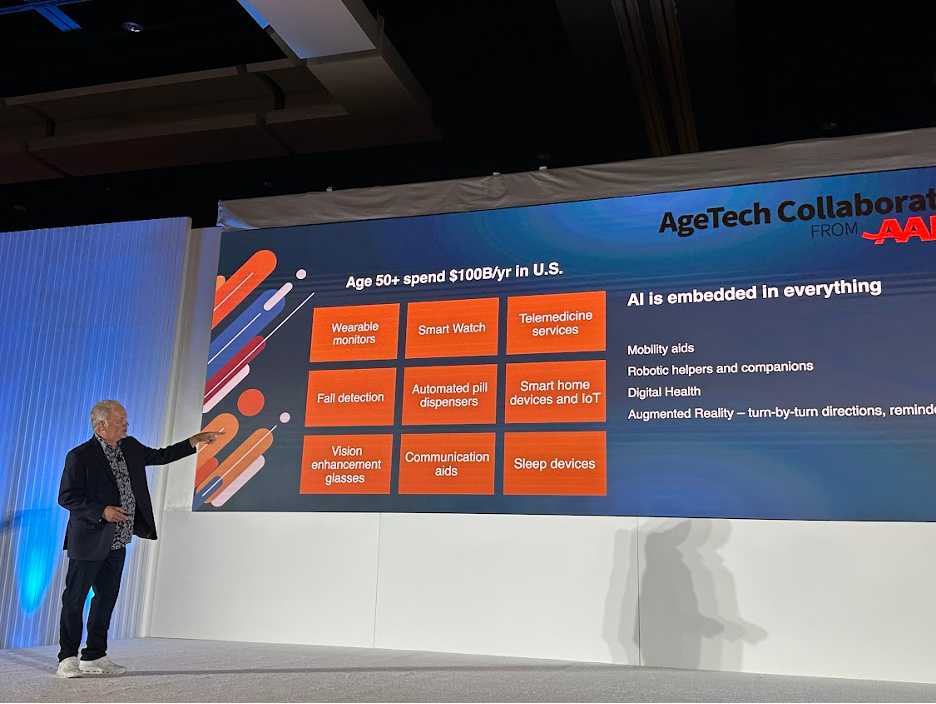
Gregg Larson, who founded the Clareity conference with Matt Cohen almost a quarter-century ago, kicked off Clareity25 with his annual technology trends update, sharing the latest innovations from the January Consumer Electronics Show (CES). His session highlighted the growing influence of AI, advancements in health care, smart home technology, and transformative shifts in modular housing solutions and AI-driven travel experiences.
5 key takeaways:
- AI integration is transforming travel and real estate: Companies like Delta and Uber are using AI to create seamless, personalized experiences, setting the stage for similar innovations in real estate.
- Aging populations drive new tech innovations: Potentially a multi-trillion dollar longevity market, AI in health care is fueling developments like AI stethoscopes, mobility-assisting robots, and augmented reality tools for seniors.
- EV adoption is accelerating worldwide: Norway has achieved a 90%-plus EV adoption rate for new vehicle registrations thanks to strategic incentives, offering a model for how policy can shape tech adoption.
- Autonomous transportation is becoming a reality: Self-driving trucks are already operational in Sweden, while Zoox’s AI-powered taxi service, without steering wheels or pedals – demonstrates the rise of autonomous mobility.
- Modular housing could be the solution to affordability crises: With complete homes being built in a factory within hours, modular and manufactured home construction is emerging as a scalable way to address housing shortages.
Key quote:
“I think it’s the number one way to get more houses out there, quickly and very affordably.” – Gregg Larson on homes built in factories.

Legal experts Ed Zorn (CRMLS), Mitch Skinner (Larson Skinner PLLC), and Claude Szyfer (Hogan Lovells LLP) provided an in-depth analysis of the ongoing legal landscape affecting MLSs and brokerages. Covering topics from DOJ investigations to commission-sharing practices, the panel emphasized that regulatory scrutiny is far from over.
Together, they underscored that while the legal landscape is constantly shifting, one theme remains consistent: transparency is key. As policymakers and regulators push for more apparent consumer protections, MLSs and associations must ensure that their rules and structures promote fairness without stifling competition.
Key quote:
“Simply because the rule is optional, that is not a get out of antitrust jail card.”- Claude Szyfer.
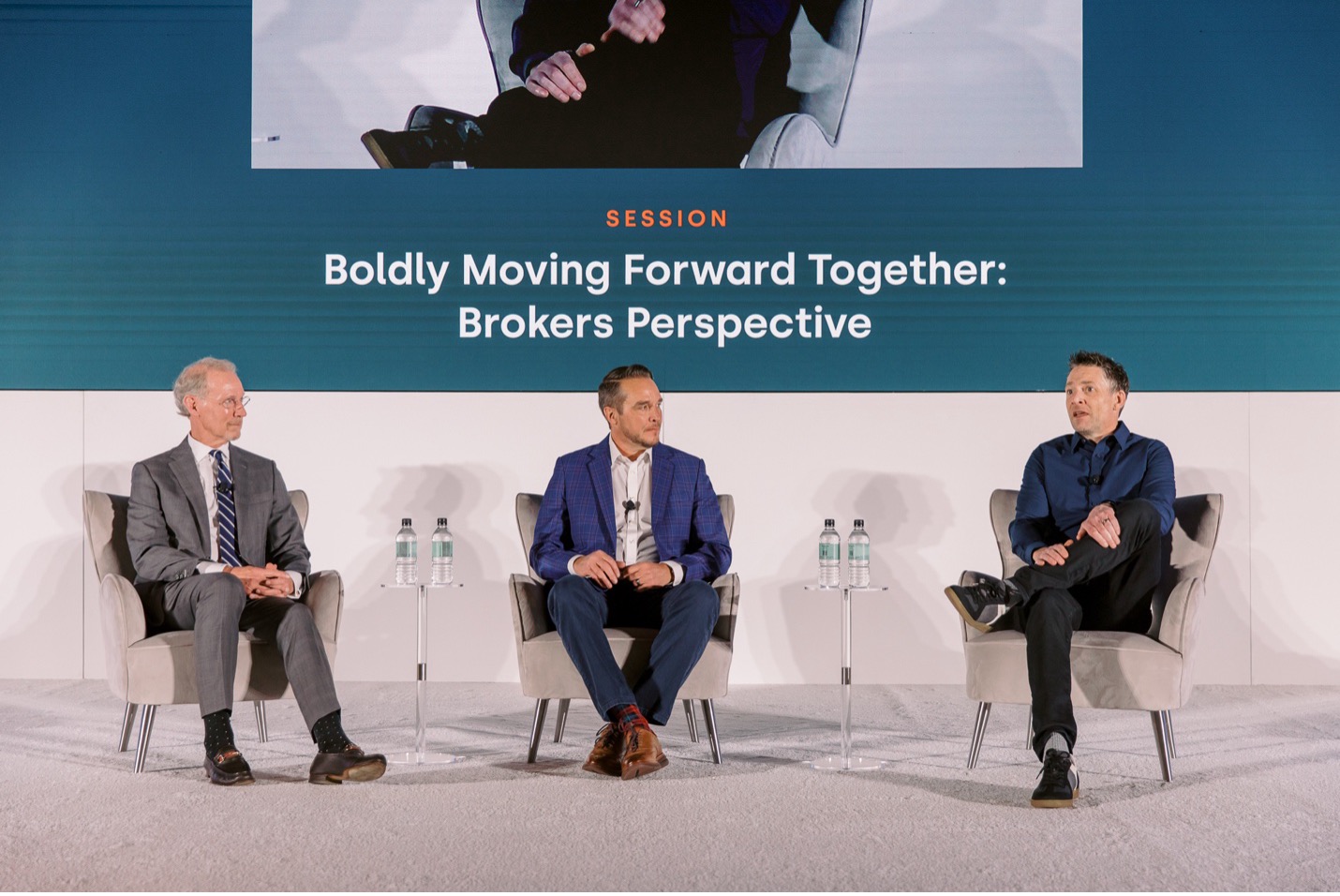
A panel of top broker executives unpacked issues from commission transparency to the future role of MLSs. Moderator Justin Haag, CEO of Northwest MLS, spoke with Peter Hunt, CEO of Hunt Real Estate ERA, and Brad Patt, Region President, BHHS Fox & Roach. Their discussion focused on how brokerages are adjusting to the new regulatory landscape while maintaining value for agents and consumers.
The discussion also touched on the ongoing challenges of real estate portals, the need for MLSs to provide value without encroaching on broker services, and how the industry can continue evolving to meet changing consumer expectations.
5 key takeaways:
- Commission transparency is reshaping the industry: Six months after major rule changes, brokers reported smooth transitions, with agents better articulating their value.
- Clear Cooperation Policy (CCP) benefits sellers: Panelists noted research shows homes listed on the open market sell for an average 18.3% higher than private listings.
- MLS technology should complement, not compete with, brokers: Brokers expressed concerns that MLSs expanding their tech offerings could diminish broker differentiation.
- Real estate portals are a double-edged sword: While necessary for visibility, their growing dominance creates economic challenges for brokers who must pay for leads on their own listings.
- MLS consolidation faces resistance despite clear benefits: Though merging MLSs would improve efficiency, many smaller organizations hesitate to give up control.
Key quote:
“Sellers left a billion dollars on the table when (listings) go private.” –Brad Patt, referencing research on exclusive listings versus the open market.

James Dwiggins, CEO of NextHome, Inc. and founder of Rayse, addressed one of the industry’s biggest concerns: how MLSs can better serve agents while ensuring long-term industry sustainability.
Dwiggins warned that fear-driven decision-making harms the industry and that professionals must advocate for policies protecting consumers. He emphasized the importance of the Clear Cooperation Policy (CCP).
He also challenged MLSs to go beyond simply being data repositories by adopting new technology, improving education, and helping agents communicate their value to consumers.
5 key takeaways:
- Consumer-centric focus: All industry decisions should prioritize what’s best for homebuyers and sellers rather than being driven by fear of litigation or negative PR.
- Value of Clear Cooperation Policy: CCP is vital for market fairness and consumer protection, with data showing that off-MLS listings typically sell for significantly less and may disproportionately impact minorities.
- Proactive industry advocacy: The real estate industry needs to actively counter misleading media narratives with accurate information and invest in better communication strategies.
- MLS innovation opportunities: MLSs should expand beyond being listing repositories by creating a “Buyer MLS” with reverse prospecting (already in many markets), enhanced property data, and other tools that deliver value to agents and consumers.
- Agent Value Proposition Support: MLSs can help agents demonstrate their value through tools like detailed property reports, AI-enhanced visualizations, and cost analysis features that empower agents to justify their services.
Quote of the session:
“Don’t give in to peer pressure. Don’t give in because you worry about litigation. We have to make sure we’re making the right decisions for protecting the consumer in our industry.” – James Dwiggins.
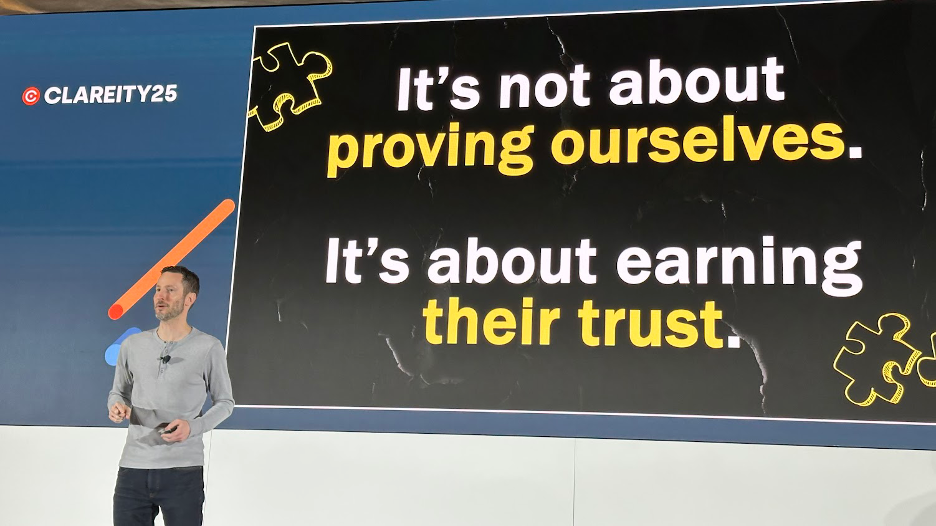
Jason Feifer, Editor-in-Chief of Entrepreneur magazine, delivered a powerful keynote about how industries – including real estate – can embrace disruption rather than resist it. He emphasized that those who succeed in changing environments are the ones who reframe their challenges, adapt proactively, and embrace new opportunities without hesitation.
5 key takeaways:
- Embrace being bad before getting good: Success comes from tolerating the early struggles of learning before mastering a skill.
- Change triggers loss aversion: Humans instinctively resist change because they focus on what they might lose rather than gain.
- The key to motivation is ARC (Autonomy, Relatedness, Competency): If these psychological needs aren’t met, we will seek them elsewhere, sometimes unproductively.
- Recovery speed doesn’t matter – repair does: What truly builds trust is not perfection but demonstrating a willingness to improve and adapt.
- Frame change as an improvement, not a replacement: People don’t want something entirely new; they want a better version of what they already know.
Key quote:
“You can’t be good at something unless you’re willing to be bad.” – Jason Fiefer quoting actor and entrepreneur Ryan Reynolds on reacting to change.
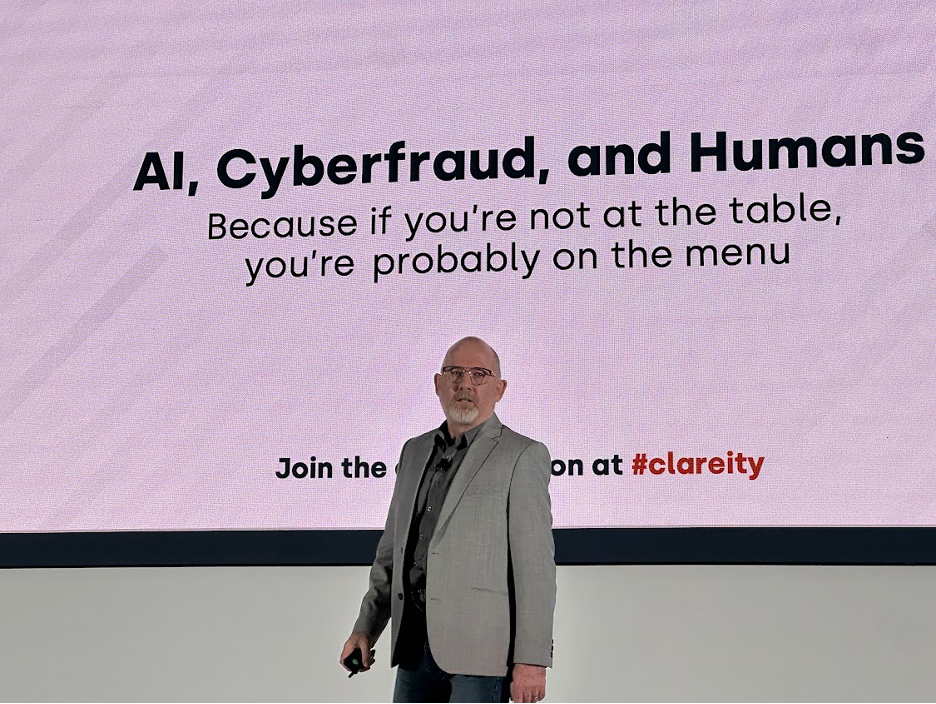
The AI and cybersecurity-focused sessions at Clareity25 underscored the rapid rise of cyber threats and the critical role that individuals, leadership, and organizations play in safeguarding data and operations.
Renowned cybersecurity veteran Neal O’Farrell’s keynote on “The Human Perimeter” emphasized that while AI has accelerated the sophistication of cyberattacks, most breaches still exploit human behavior. He highlighted how AI-generated phishing attacks, voice cloning, and synthetic identities make it increasingly difficult to differentiate between legitimate and fraudulent communications. Neal warned that AI can now craft highly personalized attacks, leveraging real-time data to deceive even the most cautious professionals.
The follow-up panel discussion with Neal, CoreLogic’s David Hamilton, and Matt Cohen expanded on these themes, delving into practical security strategies organizations can implement. The panelists emphasized that traditional compliance-based training is no longer sufficient in today’s threat landscape. Instead, security must be integrated into everyday business operations, with leadership actively fostering a security-conscious culture.
Regular phishing simulations, multi-factor authentication, and continuous risk assessments were presented as key defenses. Panelists also highlighted the growing risks of AI-powered fraud, particularly in wire transfers and identity verification, stressing that security policies must remain dynamic to counteract these rapidly evolving threats as what you use for protection today might not work tomorrow.
5 key takeaways:
- AI is transforming cyber threats: AI-generated phishing attacks and synthetic identities are making fraud more convincing and harder to detect, enabling criminals to bypass traditional security measures.
- Human behavior remains the primary security risk: Despite technological advancements, most cyberattacks succeed by exploiting trust, negligence, or social engineering tactics rather than technological vulnerabilities.
- Security must be an ongoing discussion: Annual compliance training is insufficient; monthly security education, phishing simulations, and real-time awareness campaigns help build an organization’s security-first mindset.
- Leadership must take ownership of security: Cybersecurity is an executive responsibility, not just an IT function. Effective security requires strategic involvement from leadership to establish proactive policies and ensure organization-wide participation.
- Security policies must constantly evolve: The fast advancement of cyber threats means that last year’s security practices are already outdated. Organizations must continuously adapt their security measures, incorporating AI-driven detection tools and real-time threat monitoring to stay ahead of attackers.
Quote of the session:
“Your best defense against these threats is human intelligence – the most powerful technology ever created, is right between your ears.” – Neal O’Farrell
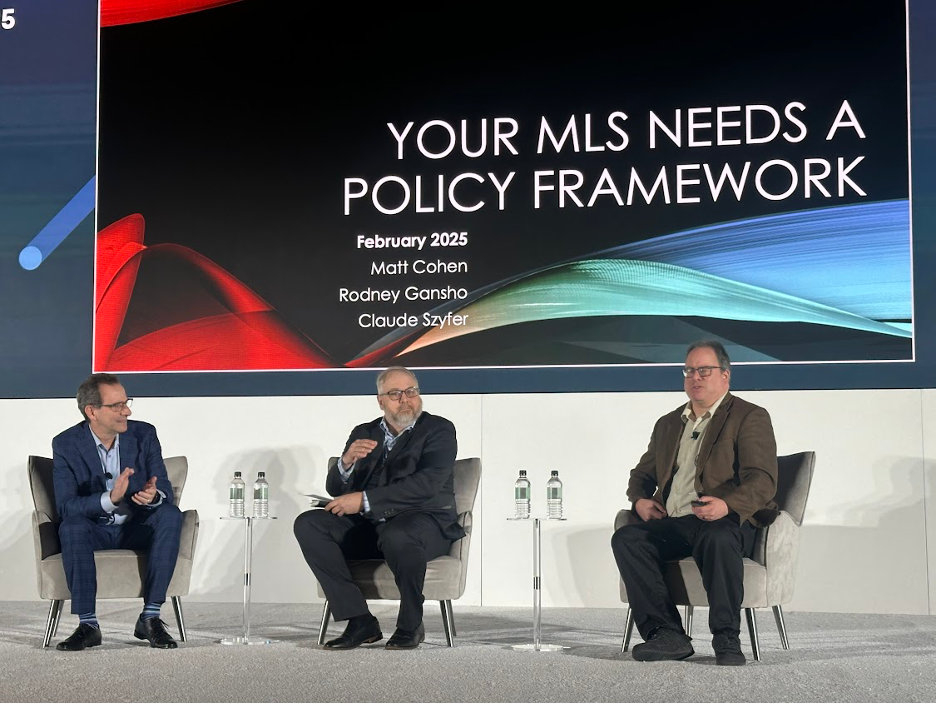
Panelists Matt Cohen (CoreLogic), Rodney Gansho (NAR), and Claude Szyfer (Hogan Lovells) outlined a structured framework for policy development that includes stakeholder input, documentation, enforcement mechanisms, and legal considerations. They emphasized that MLSs should not passively adopt policies but instead actively shape rules that best serve their unique market needs and align with both regulatory expectations and real-world applications. The panelists also stressed that policy creation is an iterative process, requiring continuous feedback, enforcement adjustments, and legal oversight to remain effective.
5 key takeaways:
- Policy development is a shared responsibility: MLSs, NAR, and industry stakeholders collaboratively create policies rather than having them imposed from the top down.
- Strategic policy structure is essential: Understanding the difference between policies (principles), rules (requirements), procedures (implementation steps), and guidelines (supporting information) helps create more transparent and more effective governance. Ensuring the right steps are thoroughly documented before the implementation stage helps everything go smoothly.
- Legal considerations drive policy decisions: MLS policies must comply with fair housing laws, antitrust regulations, intellectual property rights, and due process requirements to mitigate legal risks. It’s important to consult a qualified attorney during the policy creation and adoption processes.
- Enforcement must be consistent and fair: Strong enforcement mechanisms, including due process hearings and standardized sanctions, ensure compliance and build stakeholder trust.
- MLSs should be transparent: MLSs should customize policies to their specific markets while staying within broader regulatory frameworks rather than simply implementing national mandates.
Key quote:
“It’s not NAR pushing the policy on you. It’s more complex than that; it’s a shared responsibility, and that’s an important distinction.” – Matt Cohen.
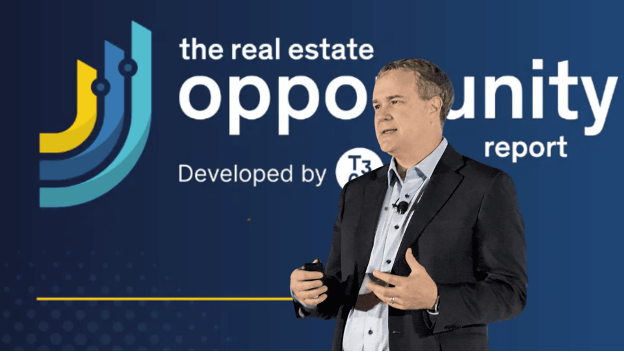
Jack Miller, President & CEO of T3 Sixty, presented key findings from The Opportunity Report, highlighting the industry’s ability to predict challenges but its failure to act on them.
Miller emphasized the urgency of professionalizing the industry, strengthening advocacy efforts, and improving MLS governance to keep up with evolving market demands.
The session underscored the critical need for leadership diversity, better industry-wide communication, and the need for continued advocacy for the real estate industry.
5 key takeaways:
- Industry foresight is underutilized: The original Opportunity Report was 83% accurate in predicting today’s challenges, but many of its recommendations were never acted upon. Real estate leaders must take a proactive approach to industry risks.
- Professional standards must be elevated: The industry needs to shift toward higher standards, increased training, and better communication of an agent’s value to improve public perception and trust.
- Real estate teams are reshaping the market: Teams now control a significant portion of production, yet the industry lacks adequate support structures to help them scale effectively.
- Leadership diversity is essential: To successfully navigate market changes, the industry must bring in leaders from diverse professional backgrounds, including finance, technology, legal, and marketing.
- Advocacy is the top priority: Across the board, leaders agreed that more vigorous advocacy efforts are critical to protecting the industry from external pressures and misinformation.
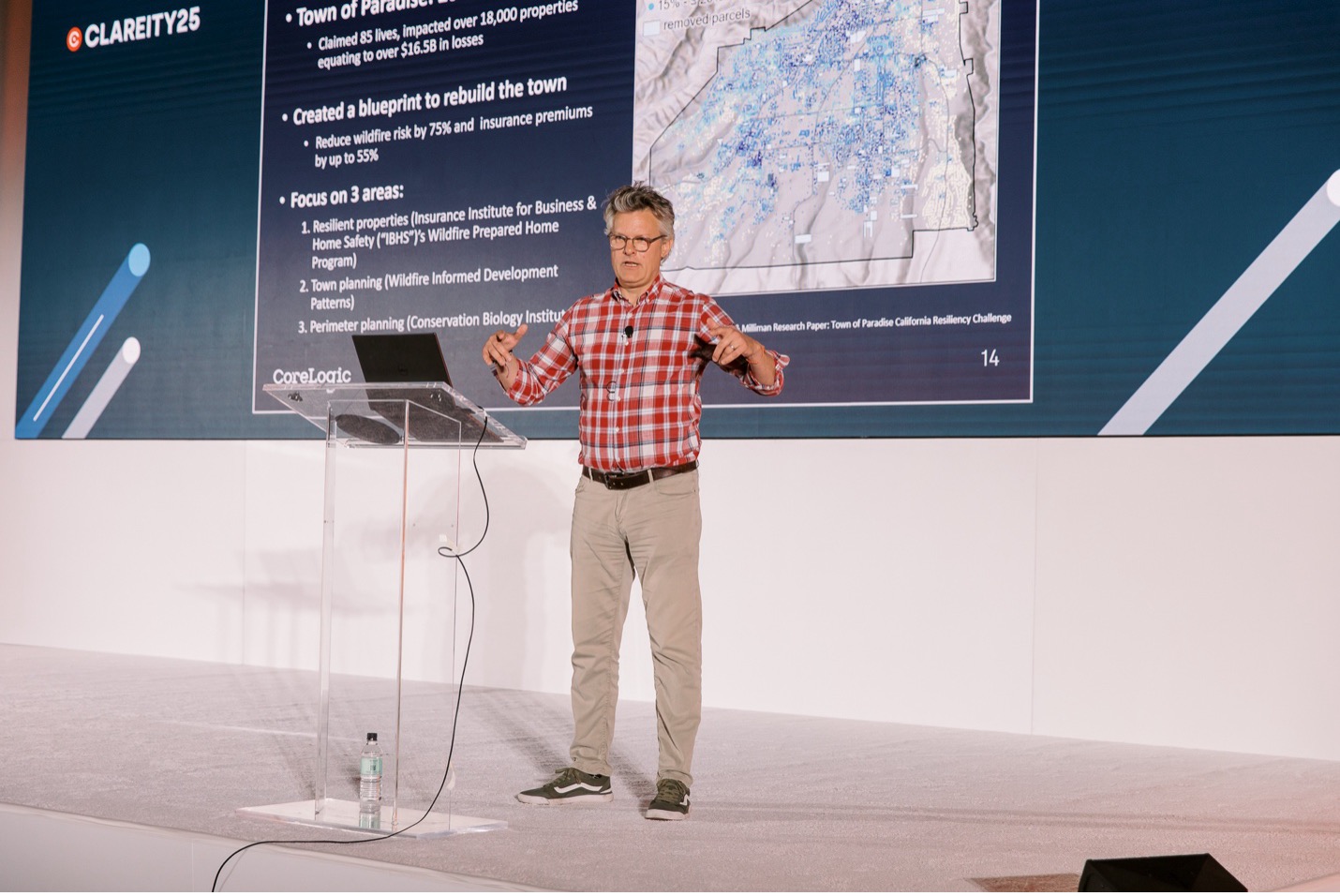
John Rogers, Chief Data & Analytics Officer at CoreLogic, delivered a data-driven session on climate risk and its impact on housing. With insurance premiums rising 38% nationally since 2019 and natural disasters becoming more frequent, he emphasized how advanced analytics can help property owners, lenders, and insurers make informed decisions.
The session also featured resilient building strategies and policy initiatives that can mitigate risk and lower insurance costs.
5 key takeaways:
- Data-driven risk assessment: CoreLogic’s analytics predict climate-driven financial risks for individual properties through 2050, moving beyond broad regional forecasts.
- Rising insurance costs: Insurance premiums now account for 9% of monthly housing payments, with some states like Texas experiencing a 55% increase due to severe weather events.
- Population-risk paradox: Despite rising climate risks, people continue migrating to high-risk areas, such as wildfire-prone California and hurricane-vulnerable Florida.
- Green shoots: Building resilient communities: The 2018 Paradise, CA wildfires created a blueprint on how the town could be rebuilt, reducing future wildfire risk by 75% and insurance premiums by up to 55%.
- Consumer empowerment needs: Homeowners need clearer, more actionable information on how to reduce their climate risk, much like credit scores provide improvement pathways.
Key quote:
“People like to live in desirable places…these are the riskiest areas in the United States.” – John Rogers.
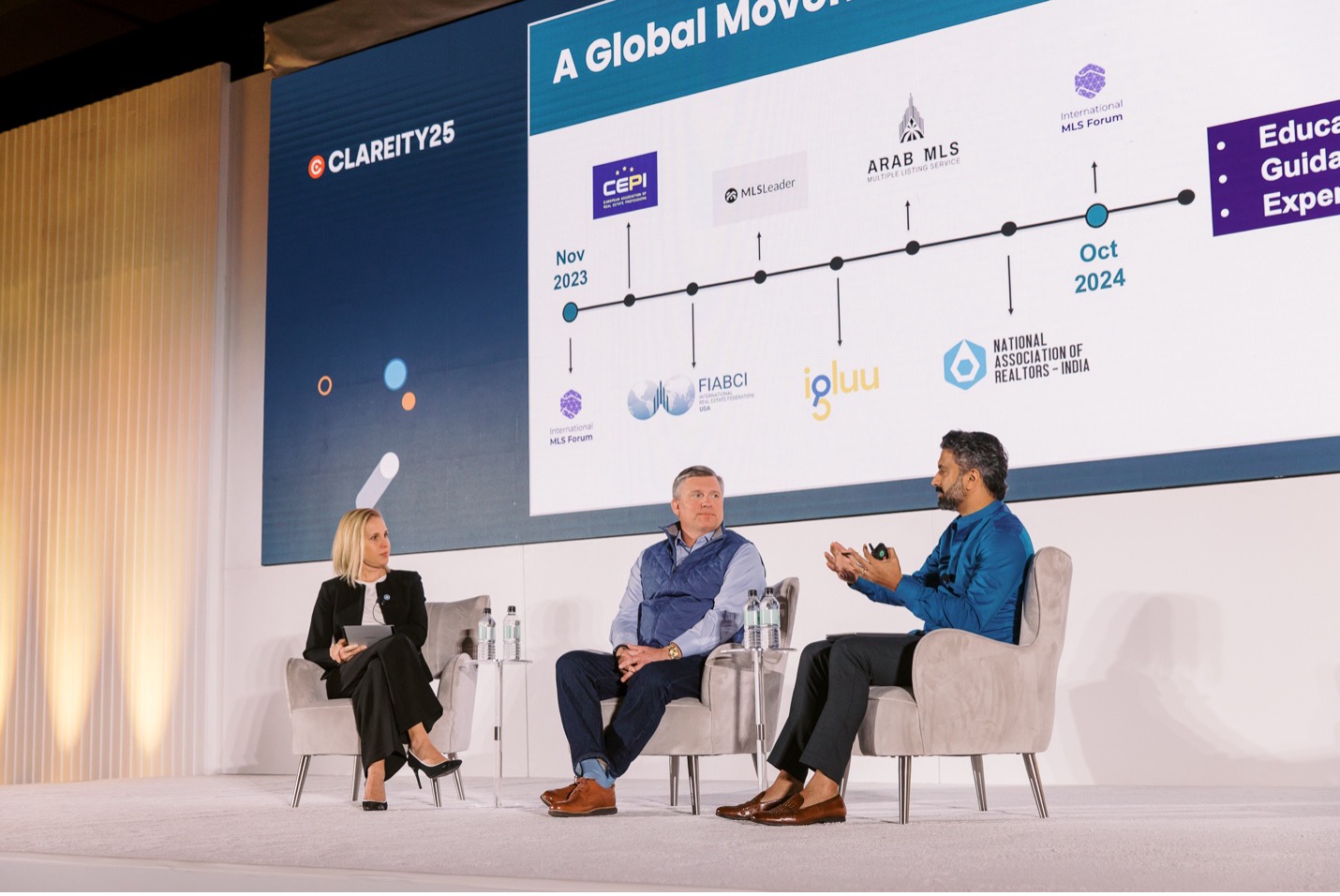
International expansion of Multiple Listing Services (MLSs) is gaining momentum. Industry leaders including CoreLogic’s Kevin Greene, Stellar MLS’s Dr. Mathew Kallumadil, Igluu’s Carlos Grass, RESO’s Sam DeBord, and Stellar MLS’s Marion Weiler discussed the opportunities and challenges of global MLS adoption. Countries in Europe, Central and South America, and in the Middle East are adopting MLS frameworks with a growing interest in leveraging established data standards rather than reinventing the wheel.
A key theme of the discussion was the necessity of local adaptation. While the North American MLS model provides a strong technical foundation, each country requires tailored solutions that respect cultural, regulatory, and operational differences.
5 key takeaways:
- Global demand for MLS is increasing: With 51 countries represented at the latest International MLS Forum, there is a movement toward more structured and transparent property marketplaces worldwide.
- Localization is critical: While data standards accelerate adoption, MLS implementations must accommodate local regulations, market practices, and cultural nuances.
- Education is a necessary first step: Many international markets have fundamental misconceptions about MLS structures, making awareness and training essential before launching new systems.
- Partnerships drive successful expansion: The most effective MLS projects involve collaboration between technology firms, real estate organizations, and financial institutions to build sustainable models.
- Standardized data enables cross-border transactions: Countries adopting established data standards benefit from improved market efficiency, cross-border cooperation, and enhanced consumer confidence.
Quote of the session:
“The misconception that standards limit business practices or the way you can work in a different marketplace – they don’t.” – Kevin Greene, CoreLogic
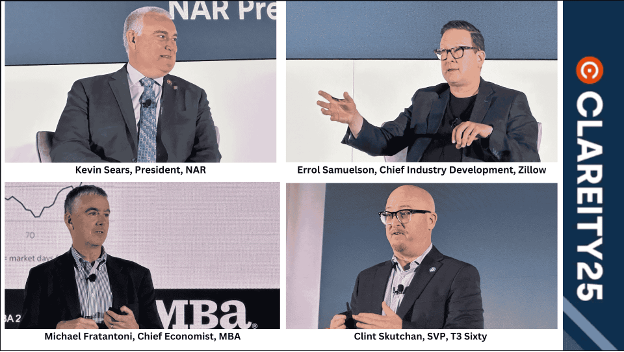
Clareity25 featured a series of other insightful sessions addressing leadership challenges, MLS ownership shifts, new MLS business models, economic trends, and the role of portals in shaping the real estate landscape, including:
NAR President Kevin Sears: A new era of leadership
Kevin Sears, President of the National Association of REALTORS® (NAR), provided a candid look at the organization’s changes and challenges. He discussed NAR’s financial discipline, its first balanced budget in over a decade, and the ongoing negotiations with the Department of Justice over the Clear Cooperation Policy. Sears emphasized the need for improved communication and proactive industry leadership.
Key quote:
“The Department of Justice has done 36 investigations into the real estate industry and the National Association of Realtors in the last 75 years.” – Kevin Sears
Redefining the MLS: Expanding identity and services to meet the future
Matt Fowler, CEO of Doorify MLS (formerly Triangle MLS), outlined a bold new vision for the future of MLS organizations. He detailed how Doorify is transitioning from a traditional association-owned entity into a fully independent business, adopting a B-to-B-to-C model that expands its services beyond real estate agents to include builders and property managers.
Fowler emphasized the need for technology choice, rebranding to help shift public perception and strengthen industry credibility, and governance transformation to remain competitive. His presentation underscored a shift in mindset: from viewing MLSs as administrative functions to running them as businesses with scalable revenue models and strategic innovation and growth initiatives.
Quote of the session:
“The MLS is the most fair, effective, and open housing network in the world. And we do not say that to people.” – Matt Fowler.
Future of MLS ownership: evolving models and market forces
Clint Skutchan of T3 Sixty explored how MLS ownership models are changing. With private investment interest growing and MLS consolidation accelerating (a 22% reduction in MLSs since 2018), the landscape is shifting away from association-only ownership. He highlighted the opportunity for MLSs to monetize data intelligence and align their service areas with actual consumer behavior rather than outdated territorial boundaries.
Key quote:
“Competition is coming, and it’s going to be more and more intensified.” – Clint Skutchan
Economic trends: a stabilizing market and shifting demographics
Michael Fratantoni, Chief Economist at the Mortgage Bankers Association, analyzed the broader economic landscape, highlighting persistent inflation, fiscal policy concerns, and the evolving housing market. He forecasted mortgage rates stabilizing in the 6-7% range, modest home price growth of 1-2% annually, and an improving affordability picture as wage growth outpaces housing costs.
Key quote:
“Millennials have been late to everything their entire life.” – Michael Fratantoni
Zillow’s vision: AI, commissions, and the future of MLS
Errol Samuelson, Chief Industry Development Officer at Zillow, shared research showing sellers lose significant money when selling off-MLS (averaging $5,000 nationwide and up to $13,000 in California). He also discussed Zillow’s AI advancements, emphasizing that AI will enhance agent productivity.
Quote of the session:
“AI is not going to replace agents. It will make them more efficient.” – Errol Samuelson.
The “Denouement” of Gregg Larson

The final highlight of Clareity25 was the completion of a full circle path for Clareity founder and industry legend Gregg Larson, including an on-stage tribute and culminating in the 1980s “Back to the Future” themed party to honor one of the G.O.A.T.S. of our industry.

Some leaders don’t just shape an industry, they help redefine it. Gregg has been helping propel real estate forward for over 30 years, leaving an imprint that will last long after his (current) retirement. He built one of the industry’s most impactful, sought after conferences, Clareity, and his work with many of the largest online companies, brokerages, franchisers, title companies, lenders, associations, and MLS vendors, as well as his time with CoreLogic, has brought immeasurable expertise, insights, and innovation to our space.
Thank you, Gregg, for your incredible contributions!
Market conditions are evolving, regulations are tightening, and technology is reshaping how business gets done. Despite the challenges there are so many opportunities and much to be optimistic about. For MLS and broker leaders, and real estate professionals, that means staying flexible, forward-thinking, and open to new ways of operating. Those who embrace change and push for higher standards will lead the way in shaping what comes next.
See you at next year’s Clareity!
Written by: Real Estate Team

